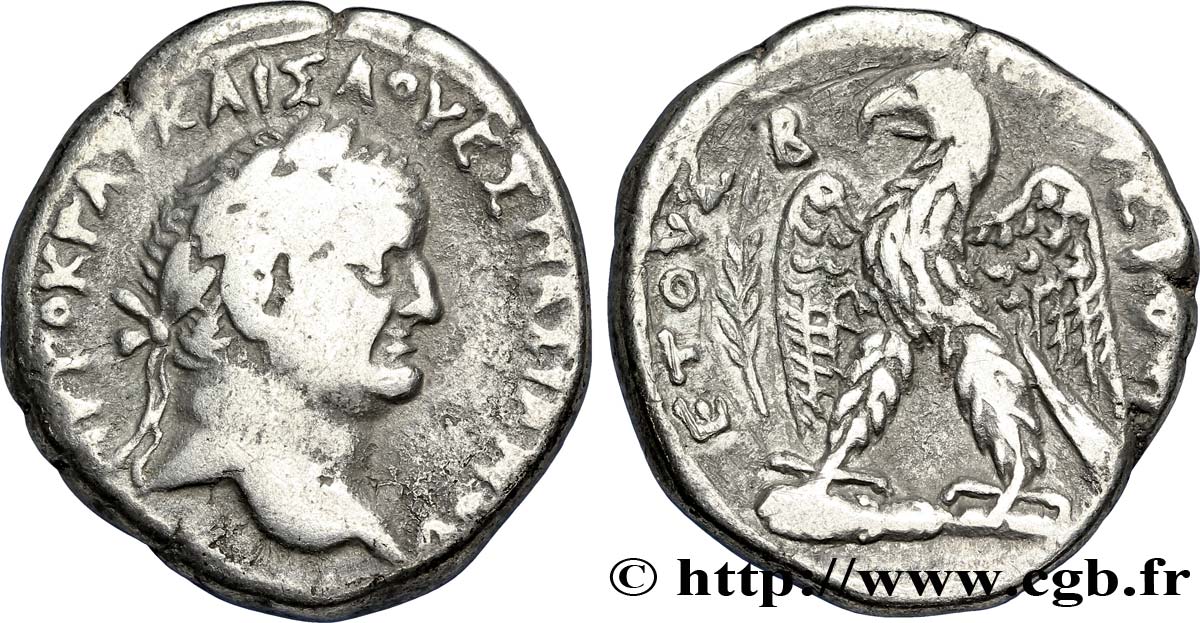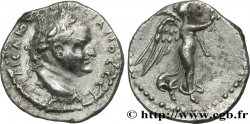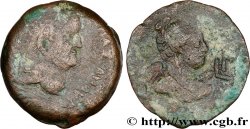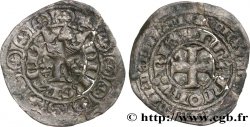E-auction 11-2579 - bpv_156720 - VESPASIANUS Tétradrachme syro-phénicien
Sie müssen angeschlossen sein und von cgb.fr genehmigt werden, um in einer E-Auktion teilzunehmen.Melden Sie sich an, um zu wetten..Die Kontobestätigungen sind innerhalb von 48 Stunden nach Ihrer Anmeldung gemacht.Warten Sie nicht bis die letzten zwei Tage vor dem Abschluss eines Verkaufs, um Ihre Registrierung abzuschließen. Klickend "BIETEN" verpflichten Sie sich vertraglich, diesen Artikel zu kaufen und Sie nehmen ohne Reserve die allgemeinen Verkaufsbedingungen für den e-auctions zu cgb.fr an.
Der Verkauf wird an der Zeit auf der Übersichtsseite angezeigt geschlossen werden. Angebote, die nach der Schließung Zeit empfangen sind, werden nicht gültig.
Bitte beachten Sie, dass die Fristen für die Einreichung Ihres Angebots auf unsere Server können variieren und es kann zur Ablehnung Ihres Angebots entstehen, wenn es in den letzten Sekunden des Verkaufs gesendet wird. Die Angebote sollen mit ganzer Zahl ausgeführt sein, Sie können Kommas oder des Punktes in Ihrem Angebot nicht erfassen. Bei Fragen klicken Sie hier, um einen Blick auf die FAQ E-Auktionen.
KEINE ANSCHAFFUNGSKOSTEN FÜR DIE KÄUFER.
KEINE ANSCHAFFUNGSKOSTEN FÜR DIE KÄUFER.
| Schätzung : | 115 € |
| Preis : | 72 € |
| Höchstgebot : | 81 € |
| Verkaufsende : | 27 Juni 2013 15:42:30 |
| Bieter : | 5 Bieter |
Type : Tétradrachme syro-phénicien
Datum: an 2
Name der Münzstätte / Stadt : Antioche, Syrie, Séleucie et Piérie
Metall : Silber
Durchmesser : 25,50 mm
Stempelstellung : 1 h.
Gewicht : 14,48 g.
Seltenheitsgrad : R1
Kommentare zum Erhaltungszustand:
Flan large et ovale. Usure importante. Belle patine grise
N° im Nachschlagewerk :
Pedigree :
Cet exemplaire est le 0112_116 de la base TSP
Vorderseite
Beschreibung Vorderseite Tête laurée de Vespasien à droite (O*).
Legende des Averses AUTOKRAT KAISA OUESPASIANOU, (Autokratoros Kaisaros ouespasianou)
Übersetzung der Vorderseite (L’empereur césar Vespasien).
Rückseite
Beschreibung Rückseite Aigle debout à gauche sur une massue, les ailes déployées.
Legende des Reverses : ETOUS B IE[ROU] (Etous b Ierou)
Übersetzung der Rückseite (Deuxième année sainte).
Kommentare
Les monnaies du troisième groupe des frappes de Vespasien, caractérisées par un aigle à gauche sur une massue, sans couronne dans le bec, sont du style d’Alexandrie mais de la datation syrienne avec la lettre annuelle surmontée d’une barre. Les quantités frappées suivent les besoins : les frappes les plus massives sont celles de l’An 2, fin de la Guerre juive et elles se terminent en l’An 5 avec des quantités frappées décroissantes au fil des années.
Plusieurs graveurs participent à cette série où celui de notre exemplaire est très bien représenté. On doit remarquer que les pièces des groupes dits au style d’Alexandrie ont une caractéristique commune : l’aigle ne tient pas de couronne (groupes 1, 2 et 3) dans le bec. Ceci renforce l’idée que cette couronne était une distinction attribuée à la ville émettrice et que nous aurions affaire à un atelier militaire ou plus simplement à un atelier - quelque soit sa localisation - fourni en métal par le Trésor Militaire, sans lien organique avec une ville.
Dans la base TSP maintenue par Michel Prieur, soixante dix-huit exemplaires sont maintenant répertoriés.
The coins of the third group of Vespasian's strikes, characterized by an eagle facing left on a club, without a crown in the beak, are of the Alexandrian style but of the Syrian dating with the annual letter surmounted by a bar. The quantities struck follow the needs: the most massive strikes are those of Year 2, end of the Jewish War and they end in Year 5 with decreasing quantities struck over the years. Several engravers participate in this series where that of our example is very well represented. It should be noted that the coins of the groups called Alexandrian style have a common characteristic: the eagle does not hold a crown (groups 1, 2 and 3) in the beak. This reinforces the idea that this crown was a distinction attributed to the issuing city and that we would be dealing with a military mint or more simply a mint - whatever its location - supplied with metal by the Military Treasury, without organic link with a city. In the TSP database maintained by Michel Prieur, seventy-eight examples are now listed.
Plusieurs graveurs participent à cette série où celui de notre exemplaire est très bien représenté. On doit remarquer que les pièces des groupes dits au style d’Alexandrie ont une caractéristique commune : l’aigle ne tient pas de couronne (groupes 1, 2 et 3) dans le bec. Ceci renforce l’idée que cette couronne était une distinction attribuée à la ville émettrice et que nous aurions affaire à un atelier militaire ou plus simplement à un atelier - quelque soit sa localisation - fourni en métal par le Trésor Militaire, sans lien organique avec une ville.
Dans la base TSP maintenue par Michel Prieur, soixante dix-huit exemplaires sont maintenant répertoriés.
The coins of the third group of Vespasian's strikes, characterized by an eagle facing left on a club, without a crown in the beak, are of the Alexandrian style but of the Syrian dating with the annual letter surmounted by a bar. The quantities struck follow the needs: the most massive strikes are those of Year 2, end of the Jewish War and they end in Year 5 with decreasing quantities struck over the years. Several engravers participate in this series where that of our example is very well represented. It should be noted that the coins of the groups called Alexandrian style have a common characteristic: the eagle does not hold a crown (groups 1, 2 and 3) in the beak. This reinforces the idea that this crown was a distinction attributed to the issuing city and that we would be dealing with a military mint or more simply a mint - whatever its location - supplied with metal by the Military Treasury, without organic link with a city. In the TSP database maintained by Michel Prieur, seventy-eight examples are now listed.








 Berichten über einen Fehler
Berichten über einen Fehler Die Seite drucken
Die Seite drucken Teilen meiner Auswahl
Teilen meiner Auswahl Stellen Sie eine Frage
Stellen Sie eine Frage Einlieferung/Verkauf
Einlieferung/Verkauf
 Details
Details















